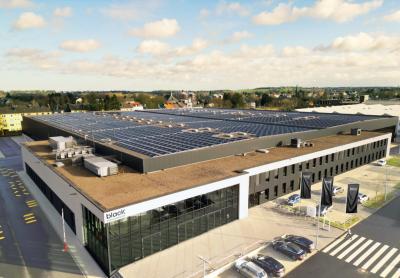Black Semiconductor, developer of next-gen energy-efficient high-performance chip technology, has announced its new headquarters FabONE in Aachen, Germany. FabONE will be the world's first production site for graphene-based optical chip technology.
Dr. Daniel Schall, co-founder and CEO of Black Semiconductor, states: "The establishment of FabONE allows us to take our ongoing technology developments of
graphene photonic chips to the next level and accelerate them significantly. We look forward to continuing to deliver on our vision of the next generation of chip connectivity.”
The company has started the design of the world's first graphene photonics fab, an unprecedented 300mm wafer pilot line cleanroom facility, scalable for production, with construction expected to start in summer 2025, validation to follow in 2026. The goal is a new optical chip technology ready for pilot production by 2027 enabling volume production starting in 2029.
The new site provides the company with 15,000 sqm (160,000 square feet) for the construction of cleanrooms and related infrastructure. It will accommodate the current team of approximately 50 employees and allow for planned growth to 100 employees by the end of 2025.
The opening of FabONE is Black Semiconductor's first major milestone following the completion of its €254,7 ($265) million financing round in June 2024, which enabled the company to take this decisive step in establishing the technological infrastructure for a scalable pilot production line for high-performance chip technology.
The technology could enable advancements in high-performance computing, AI, robotics and autonomous driving through advanced speed and efficiency. By transmitting data using light rather than traditional electrical signals, photonic integrated circuits deliver dramatically higher bandwidth while consuming less power – a critical advantage for data-intensive applications. Graphene-based photonic connectivity solutions pave the way for ultrafast chip-to-chip interconnects that unlock faster AI model training, more responsive robotics and split-second decision making in autonomous vehicles.


